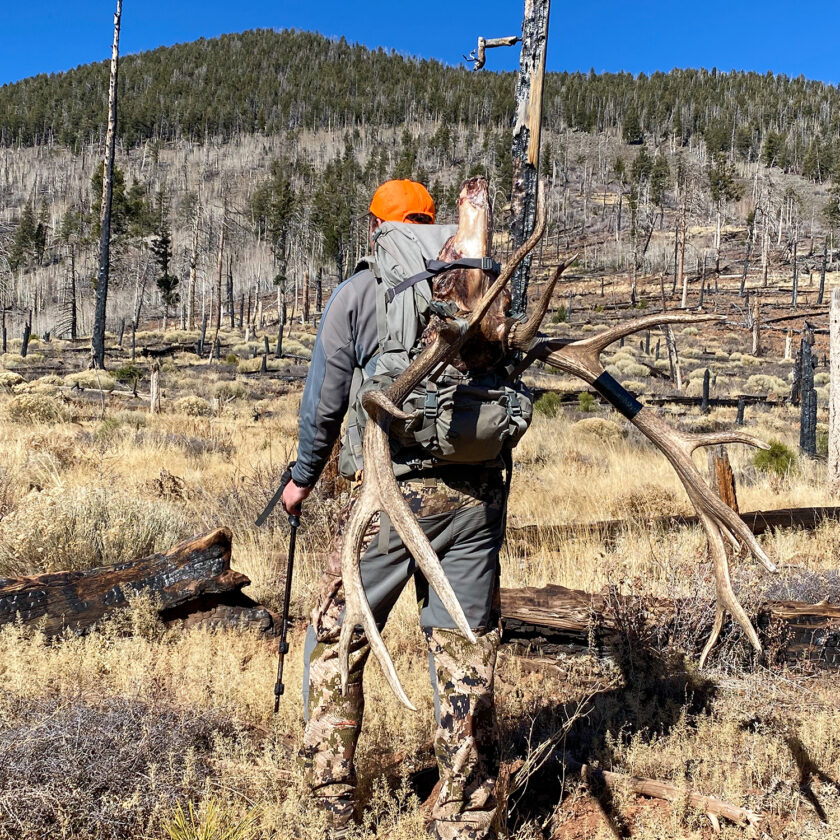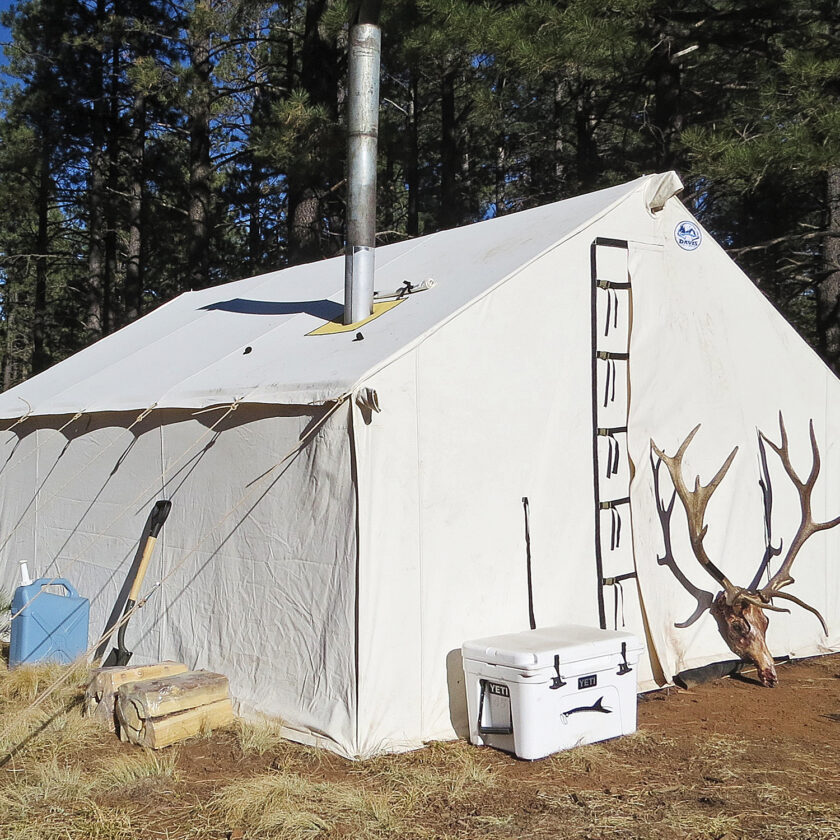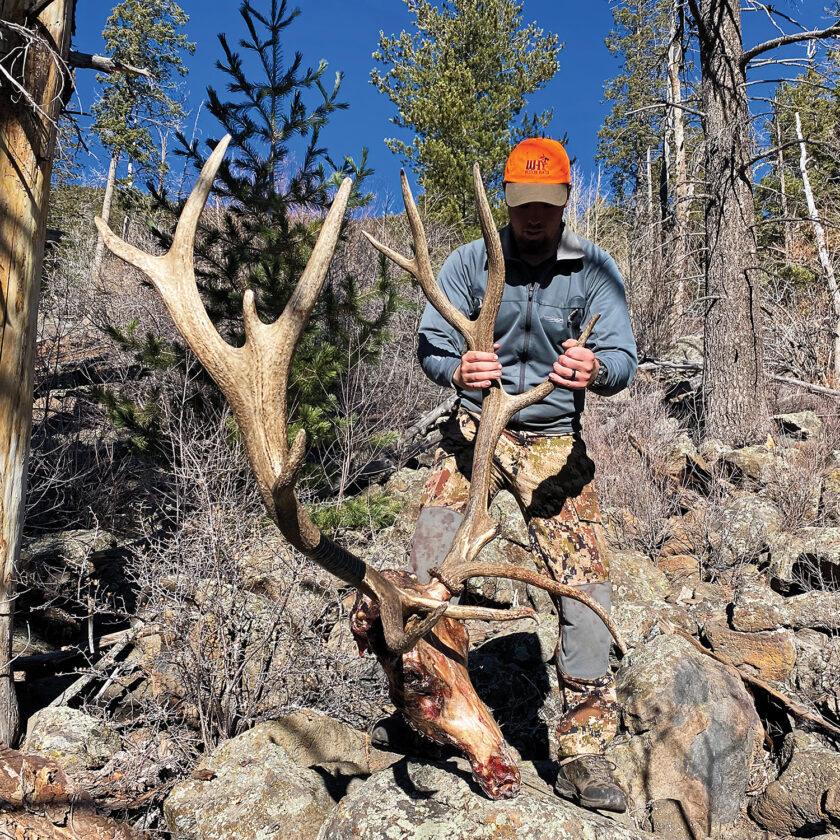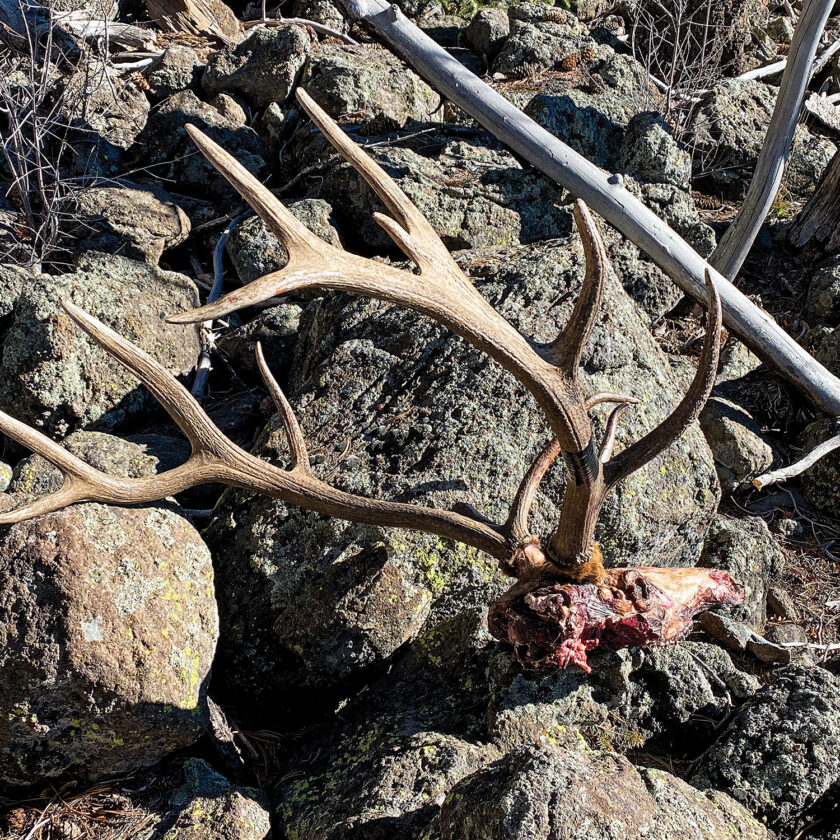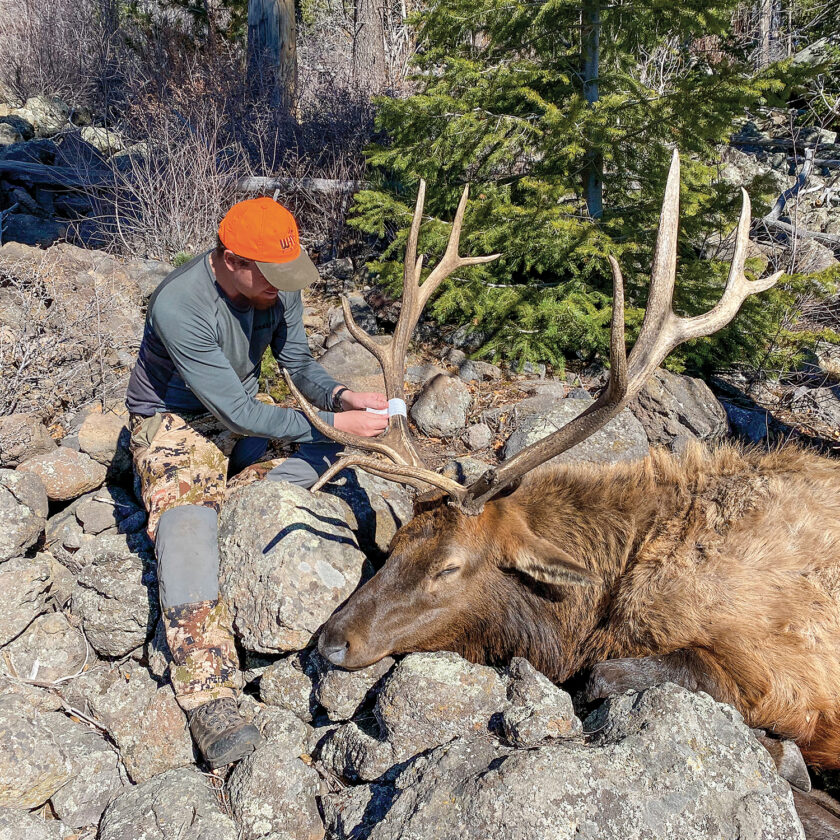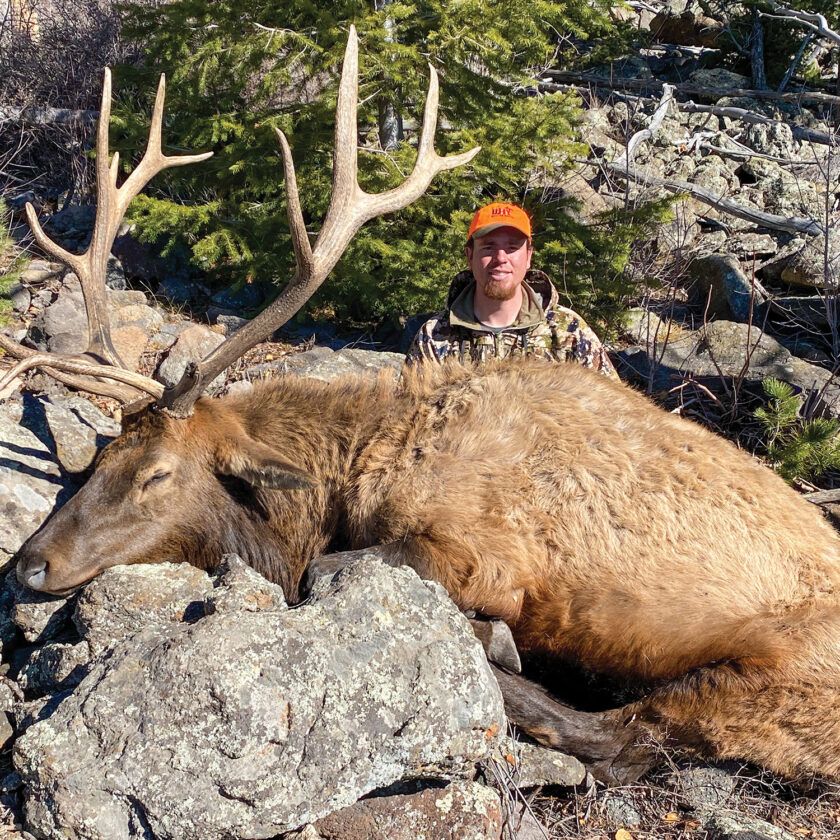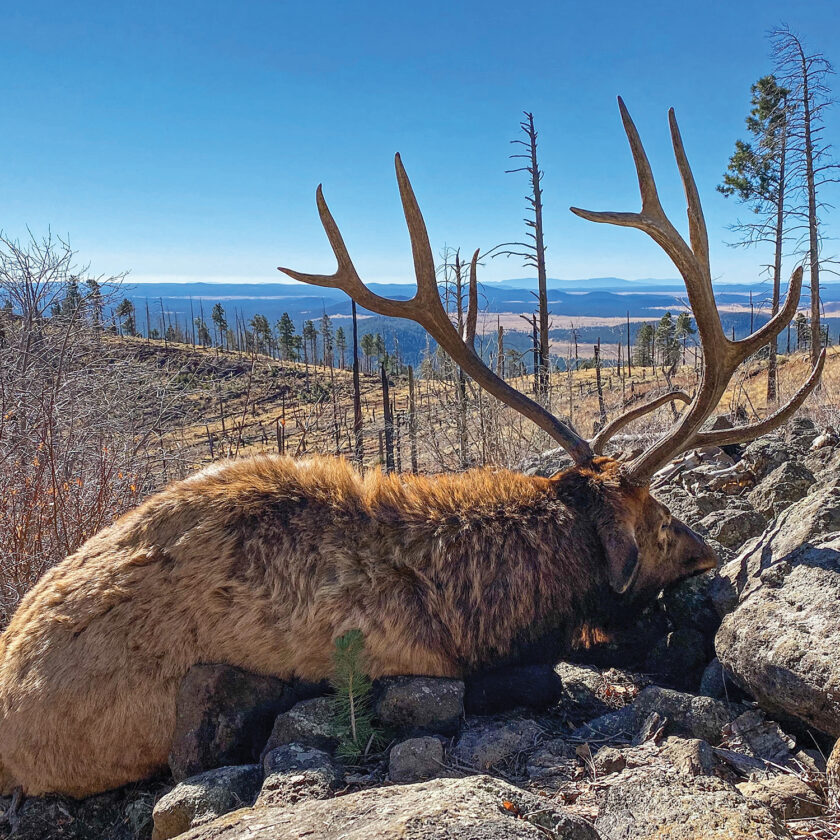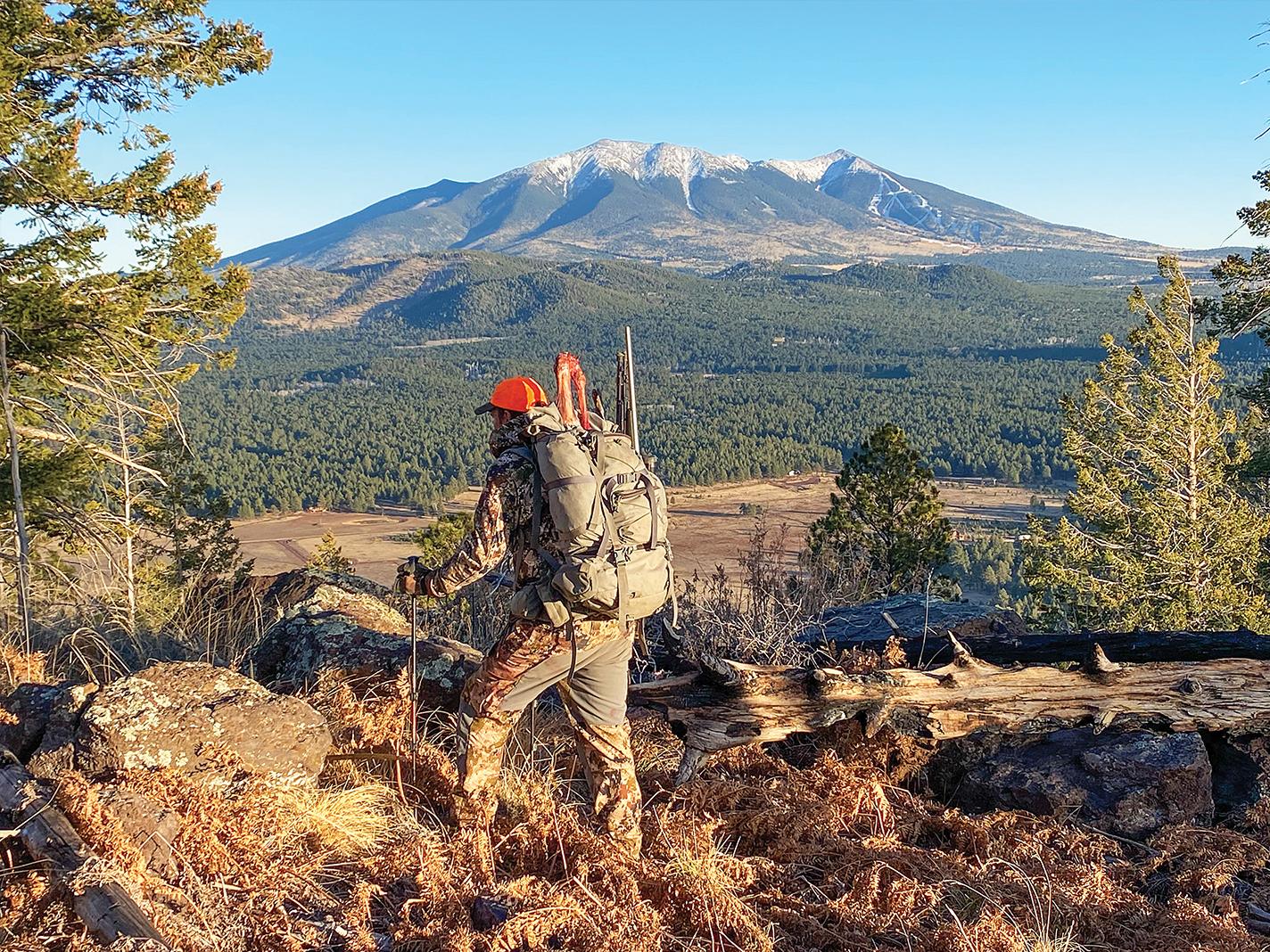
NOTICE: Certain links on this post may earn a commission for Western Hunter Magazine from Amazon or our other affiliate partners when you make a purchase. Thank you for your support.
No Time Wasted
An Arizona Late-season Elk Hunt
After four years of waiting, my credit card got hit once again for a late-season rifle elk tag in northern Arizona. I had drawn the same tag as a resident in 2017, my first late-season bull elk hunt of any kind, but after 10 weekends of scouting and a week of hunting, I went home empty-handed. In the intervening years, I would spend countless hours reliving the hunt and all the close calls, determined to learn from my mistakes when I returned for an Arizona bull. Hunting less intuitively and more deliberately, focused on the basic needs of elk, would be the key to my redemption.
Two days before the hunt, around noon, my father and I rolled into the area. After setting up camp, we headed out for an evening glass. I parked off of a less-traveled forest road, and we hiked up to a glassing knob that rose a few hundred feet from the desert floor. From here we could see the better part of the mountainside I wanted to hunt and pick apart the high country where experience told me some mature bulls might still be holed up.
Gathering Clues
A thick coat of white snow graced the mountaintop, fading away a brief thousand feet below. A minute or two of glassing informed me that the snow was sufficient to cover all of the feed up high. I shifted my focus just below the snow line, where a patchwork of grass sprouted from small openings in the decades-old burn. The grass was yellow to the naked eye, but past years informed me that fresh, green blades were tucked down by the roots. These provided the preferred meal for late-season bulls, intent upon adding calories and bulking up after the rut.
As the sun began to set behind the charred, rocky ridgeline in front of us, the first bull of the trip made an appearance. He was an average five-point with a pair of turndown fronts. A buddy stood up behind him through the evergreens that served as their afternoon shade, and a third popped up 20 yards to the left, feeding along the edge of a small clearing. All were five-points, and none were overly mature. The last half hour of light turned up nothing more than a loner spike. One evening down, and there were elk right where they should be!
The following morning brought one more scouting day, which was invaluable for putting us one step ahead of both the elk and the competition that was slowly filing in. A repeat of last night’s plan was in store, and we hoped to dig out some bulls that may have eluded us twelve hours earlier. At sunrise, we quickly found the bachelor group from the night before, though this morning a smaller-framed 6x6 joined them. Nearly an hour later, no further elk had appeared on the mountainside. With the weather heating up to the 50s and elk in their beds, I spent the middle of the day checking tanks for water and activity. The major tanks in the area were, in fact, full and bordered by mud dotted with elk tracks.
Overlooked Areas
At this point, my scouting had been deliberately focused on the needs of late-season bulls: food, water, and sanctuary. The food source was apparent and available all the way up to the snow line. I had confirmed that water was accessible near the food source, which isn’t a given in the arid climate of northern Arizona. This sanctuary would be key, as it is with most late-season elk hunts. Yet, so far, I was working the most isolated and unpressured area in the unit and hadn’t turned up anything special. My next move would be to check the smaller areas that, though not as far from open roads, still provided sanctuary due to rough terrain or lack of established access points.
For the final evening of scouting, I wanted to check an overlooked spot on the edge of my preferred hunting area. This was a location that held everything elk needed, yet with no trail or parking lot, most hunters drove right past. I picked a glassing point that allowed me to see into a hidden cut that wasn’t visible from the main road and had a clear view of a south-facing opening with ample feed at a high elevation. An hour later, and only minutes before darkness set in, the tan coat of a bull elk materialized at the top of the clearing, emerging from behind a white fir. At just over a mile away in fading light, he clearly sported a sizable six-point frame with ample mass and a dark, shaggy cape.
I quickly decided he was plenty big for this tag – certainly big enough that I wanted a closer look. Slightly to the south of where he was feeding sat an open, prominent knob that was an excellent shooting location and was within range of the bull. The plan was set, and if the bull didn’t move far overnight, he was killable at first light.
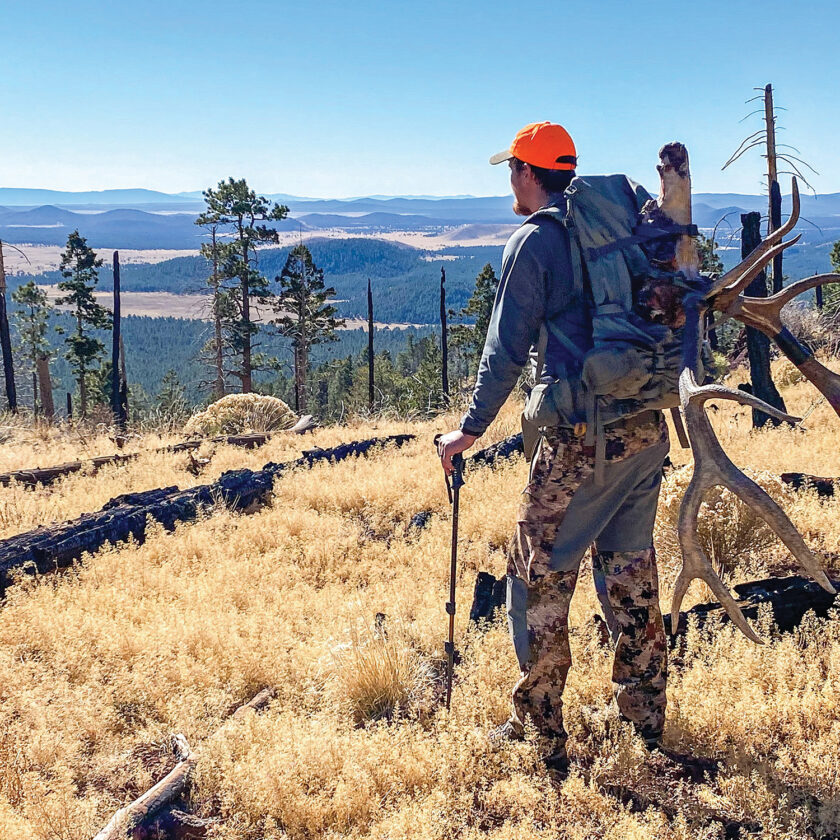
Right Where He Should Be
On opening morning, we started our hike just over an hour before first light. Clear skies and a quarter moon lit up the terrain ahead of us, the mountain’s profile looming ominously, larger than memory served. Dawn marked the official beginning of the season, yet I was still a few hundred yards short of my destination. As the crest of the knob came into view, I noted a small group of burned ponderosa pines on the skyline. These would be perfect for breaking up our outlines, so we headed straight for them.
Just on the near side of the knob, we stopped to drop packs. Before moving forward, I peeked up and over the knob from a small rock outcropping to check the opening from the night before. I glassed slowly from left to right and, to my shock, the bull was right across from us! He was calmly feeding, just below the tree line on the edge of a rocky avalanche chute bordered by pines. As he was preoccupied with his morning meal, we crawled up to a shooting position without drawing his gaze.
The sun broke the horizon as I chambered a round and got lined up in the scope, illuminating the bull’s rack through the crosshairs. I could only make out his back end with him quartered hard away, head down. I double-checked my bubble and turret in the time it took the bull to take a step or two forward. He was only a few yards from pines above and in front of him and inching closer. I needed to make a decision quickly or risk watching him disappear into the cover. “I’m shooting him,” I whispered as I flipped the safety off.
A rock-solid rest kept the crosshairs completely still, and I held mid-body, just behind his front shoulder. BOOM! The first shot, and then a second, hit vitals. The bull took a couple of steps forward and began to wobble, but I wasn’t taking any chances. A third shot, followed by a fourth, struck home and through the recoil, I lost view of the bull. “I think he went down,” shouted my dad as the bull stumbled to the edge of the rockslide and out of sight. Try as we might, we couldn’t find the bull with the glass. Knots in my stomach materialized and wouldn’t dissolve until I laid eyes on the bull. With that in mind, we strapped on our packs and started the hike across the draw.
I picked my way down the backside of the knob, then through the burnt deadfall in the bottom of the draw. Once up the other side, we had a good vantage of where the bull stood at the first shot. I impatiently scanned to the right at the edge of the rockslide, finally with enough elevation to peek into the timber where the bull had vanished. With the naked eye, aided by the shine of the rising sun, I spotted the tan glisten of a bull elk laying only feet into the trees!
After celebrating with my father, I hurried over to my bull, and he didn’t disappoint! A crown point on his right side was a nice surprise, as was a freakishly long turndown front. This bull was everything I had hoped for and with character, to boot!
The breakdown and pack out over the next few days were enjoyable and fair-weathered and, at last, I made the final hike back to my truck, antlers in tow. I could see most of the unit from atop this mountain, and as I looked out across the vast ponderosa forests and lava domes of northern Arizona that I had become so familiar with, I thought about what led me to this moment. The time and effort put in four years ago wasn’t a waste as I had thought then, but rather the experience I needed on my path to redemption.


